Physics Part 2 - Quick Guide
Physics - Introduction
Introduction
Physics is one of the most significant disciplines of natural science, which describe the nature and properties of matters.
The term ‘physics’ is derived from the Ancient Greek word i.e. ‘phusikḗ’ meaning ‘knowledge of nature’.

Definition
Physics is the branch of natural science that studies the nature and properties of matter and energy.
The significant subject matter of physics includes mechanics, heat & thermodynamics, optics, sound, electricity, magnetism, etc.
Development of Physics also makes significant contributions in the field of technologies. For example, inventions of new technology such as television, computers, cell phone, advanced home appliances, nuclear weapons, etc.
Development of Physics
During the ancient period, the development of physics took place with the development of astronomy.
However, during the medieval period, a notable work of the Arab writer and scientist Ibn Al-Haitham revolutionized the concept of physics.
Ibn Al-Haitham had written a book in seven volumes namely “Kitāb al-Manāẓir “also known as “The Book of Optics.”
In this book, Ibn Al-Haitham disprove the ancient Greek concept of vision and introduced a new theory.
Ibn Al-Haitham had also introduced the concept of the pinhole camera.
During the late medieval period, Physics became a separate discipline of the natural science.
In making physics as a separate discipline, the major contributions were given by the European scientists.
These modern European scientists had been introduced different concepts of physics and discovered and invented many new technologies.
For example, Copernicus replaced the ancient view of geocentric model and introduced the heliocentric concept; Galileo invented the telescopes, Newton discovered the laws of motion and universal gravitation, etc.
The era of modern physics came with the discovery of quantum theory by Max Planck and theory of relativity by Albert Einstein.
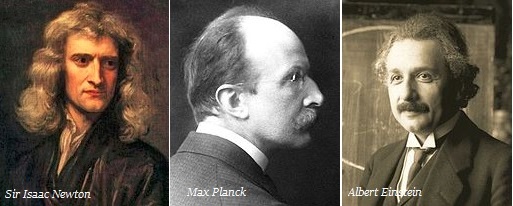
After development of modern physics, the ear of applied physics commenced where emphasis is given on ‘research’ on a particular use.
The particle physicists have been consistently designing and developing the high energy accelerators, detectors, and computer programs.
Nuclear physics is another branch of modern physics that studies the constituents and interactions of the atomic nuclei.
The most widely known inventions and applications of nuclear physics are the generation of nuclear power and the development of nuclear weapons technology.
At present, the physic scientists are working on the concept of high-temperature superconductivity.
Physics - Branches
The following table illustrates the major branches and their sub-branches) of physics −
| Branch/Field | Sub-branch/Sub-field |
|---|---|
| Classical mechanics | |
| Newtonian mechanics | |
| Analytical mechanics | |
| Celestial mechanics | |
| Applied mechanics | |
| Acoustics | |
| Analytical mechanics | |
| Dynamics (mechanics) | |
| Elasticity (physics) | |
| Fluid mechanics | |
| Viscosity | |
| Energy | |
| Geomechanics | |
| Electromagnetism | |
| Electrostatics | |
| Electrodynamics | |
| Electricity | |
| Thermodynamics and statistical mechanics | Heat |
| Optics | Light |
| Condensed matter physics | |
| Solid state physics | |
| High pressure physics | |
| Surface Physics | |
| Polymer physics | |
| Atomic and molecular physics | |
| Atomic physics | |
| Molecular physics | |
| Chemical physics | |
| Astrophysics | |
| Astronomy | |
| Astrometry | |
| Cosmology | |
| Gravitation physics | |
| High-energy astrophysics | |
| Planetary astrophysics | |
| Plasma physics | |
| Solar physics | |
| Space physics | |
| Stellar astrophysics | |
| Nuclear and particle physics | |
| Nuclear physics | |
| Nuclear astrophysics | |
| Particle physics | |
| Particle astrophysics | |
| Applied Physics | |
| Agrophysics | |
| Biophysics | |
| Chemical Physics | |
| Communication Physics | |
| Econophysics | |
| Engineering physics | |
| Geophysics, | |
| Laser Physics | |
| Medical physics | |
| Physical chemistry | |
| Nanotechnology | |
| Plasma physics | |
| Quantum electronics | |
| Sound |
Physics - Acoustics
Introduction
Acoustics is an interdisciplinary science that studies different mechanical waves passing through solid, liquid, and gases.
Basically, acoustics is the science of sound that describes the generation, transmission, and effects of sounds; it also, including biological and psychological effects sound
Likewise, acoustics studies vibration, sound, ultrasound, infrasound.

The term "acoustic" is a Greek word i.e. ‘akoustikos,’ which means "of or for hearing, ready to hear."
These days, acoustics technology is very much applicable in many industries specially to reduce the noise level.
Acousticians
The person who is an expert in the field of acoustics is known as acoustician.
There are a variety of acoustics fields of study. For example, the production sound, control of sound, transmission of sound, reception of sound, or effects of sound on human beings as well as on animals.
Types of Acousticians
Following are the major types of acousticiansn −
Bioacoustician − The expert of this field researches and studies birds of a given geographic region to determine that the man-made noise changes their behavior.
Biomedical Acoustician − The expert of this field researches and develop medical equipment to treat kidney stone.

Underwater Acoustician − The expert of this field research and design sophisticated sonar hardware that explores the ocean floor.
Audiologist − The expert of this field diagnose hearing impairments.
Architectural Acoustician − The expert of this field designs an opera house to manage the high pitch sound (inside the house).
Fields of Acoustics
Following are the major fields of acoustics.
General Acoustics − This field of acoustic studies about the sounds and waves.
Animal Bioacousticians − This field of acoustic studies how animals create, use, and hear sounds.
Architectural Acoustics − This field of acoustic studies about the building designs to have the pleasing sound quality and safe sound levels.
Medical Acoustics − This field of acoustic researches and studies the use acoustics to diagnose and treat various types of illnesses.
Archaeoacoustics − This field of acoustic studies sound systems of archaeological sites and artefacts.
Psychoacoustics − This field of acoustic studies – how human beings respond to a particular sound.
Physics - Biophysics
Introduction
Biophysics is a fascinating term for the biology researchers as well as for the physics researcher, as it creates bridge between these two subjects of science.
Biophysics (also known as biological physics) is basically an interdisciplinary approach to study the biological systems. It is uses physics technology to understand the biological systems.

Likewise, biophysics integrates all levels of biological organization, i.e. from molecular level to organismic and population level.
In 1892, first time Karl Pearson used the term ‘Biophysics.’
Subject Matter of Biophysics
Biophysicists study the life (basically human life); starting from the cellular organs (such as ribosome, mitochondria, nucleus, etc.) to organisms, and their environment.
With the advancement of technology, the scientists and researchers of both the disciplines (namely Biology and Physics) started exploring a different level of life to understand how actually biological system works.
The biophysicists largely research on the following types of questions −
How do the cells of nervous system communicate?
How and why do viruses invade cells?
What is the functionality of protein synthesis?
How do plants harness sunlight to make their food?
Advantages of Biophysics
The study of life at molecular level helps to understand many phenomena of a human body including various diseases and their treatment.
Biophysics helped to understand the structure and function of DNA.

The study of biophysics helps to understand the various elements of bio-chemistry.
Biophysics also help to understand the structure and various functionality of protein.
Sub-Branches of Biophysics
Following are the major sub-branches of biophysics −
Biochemistry
Physical chemistry
Nanotechnology
Bioengineering
Computational biology
Biomechanics
Bioinformatics
Medicine
Neuroscience
Physiology
Quantum biology
Structural biology
Technology of Biophysics
Following are the major technologies used in Biophysics −
Electron microscope
X-ray crystallography
NMR spectroscopy
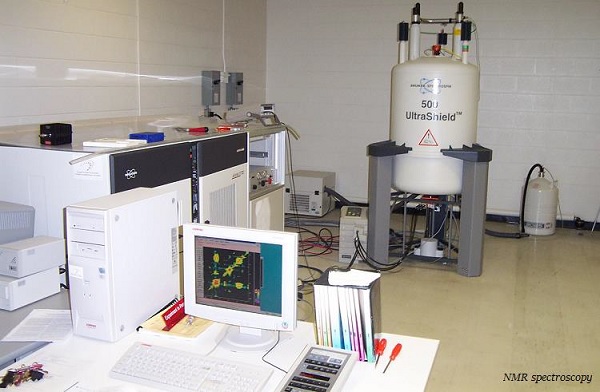
Atomic force microscope (AFM)
Small-angle scattering (SAS) technology
Physics - Econophysics
Introduction
Econophysics is an interdisciplinary science that studies the dynamic behavior of finance and economic markets.
In order to solve the problems of economics and also to understand the dynamic behavior of the market, the econo-physicists develop applied theories.
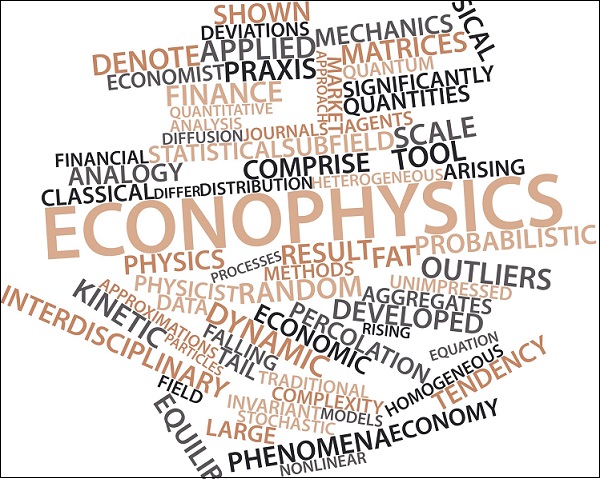
Econophysics, sometime, is also known as the physics of finance.
It applies statistical mechanics for the economic analysis.
Econophysics Questions
The econophysics questions include −
How to accurately measure and explain the significant properties of market dynamics?
How to stabilize the markets?
What are the different behaviors in different markets?
Tools of Econophysics
The fundamental tools of econophysics are −
Probabilistic method
Statistical method
These two methods are borrowed from statistical physics.
Other tools taken from Physics
Fluid dynamics
Classical mechanics
Quantum mechanics
Models of Econophysics
Following are the major models those are used in Econophysics −
Percolation Model
Kinetic exchange models of markets
Chaotic models
Information theory
Random matrix theory
Diffusion theory
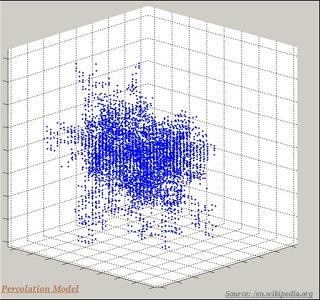
Physics - Geophysics
Introduction
Geo-physics is a specialized branch of Earth science that studies the physical properties and physical process of the Earth.
Geophysicists use some quantitative methods and advance technology to analyze the Earth’s properties and process.
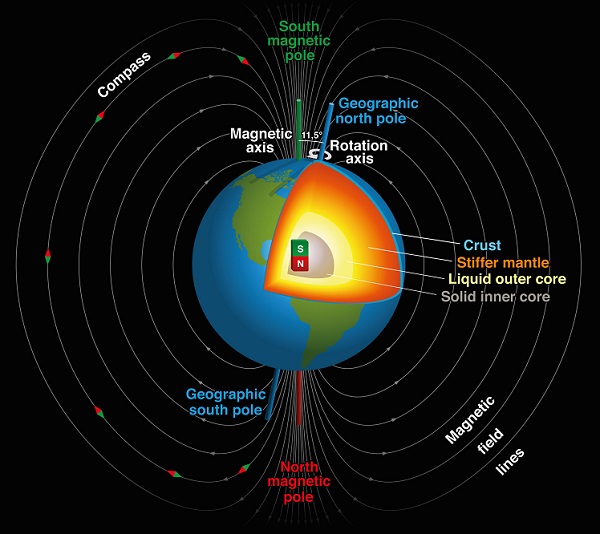
Technology of geophysics is used to locate mineral resources, mitigate natural hazards, and protection of the environment.
Geophysics has been carved out as an independent discipline from different subjects, such as, geology, physical geography, astronomy, meteorology, and physics.
Elements of Geophysics
Major elements those are studied under the geophysics are −
Shape of the Earth
Gravitational force of the Earth
Magnetic Fields of the Earth
Internal structure of the Earth
Composition of the Earth
Movement of the Earth’s plate (plate tectonics)
Volcanic activity
Rock formation
Water cycle
Fluid dynamics, etc.
Problems that Geophysicists Address
Following are the problem areas that geophysicists address −
Building highways and bridges
Mapping and exploration of mineral resources
Mapping and exploration of water
Mapping the earthquake and volcanic regions
Geological mapping
Archeology discovery
Construction of dam and its safety
Forensic discovery (finding the buried dead bodies)
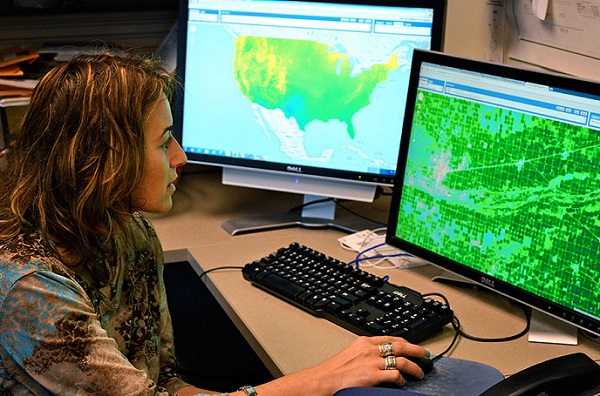
Techniques and Technology of Geophysics
Following are the major techniques and technology of geophysics −
Geo-magnetism
Electromagnetics
Polarization
Seismic technology
Ground penetrating radar (GPR), etc.
Benefits of Geophysics
Following are the major benefits of geophysics −
Researching and studying archeological sites without destroying them
Designing environmental friendly urban architecture
Locating and judiciously exploiting natural resources
Helping in mitigation of natural hazards such as landslide, earthquake, etc
Physics - Nanotechnology
Introduction
Nanotechnology is the science of management and manipulation of atoms and molecules to design a new technology.
Nanotechnology is the supramolecular technology, which means, it is the engineering of functional systems at the molecular or supramolecular scale.
Interestingly, one nanometer (nm) is equal to one billionth, or 10−9, of a meter.

The concept and idea of nanotechnology original discussed first time in 1959 by Richard Feynman, the renowned physicist.
Richard Feynman in his talk “There's Plenty of Room at the Bottom,” described the feasibility of synthesis via direct manipulation of atoms.
However, in 1974, the term "Nano-technology" was first used by Norio Taniguchi.
Major fields of Research
Following are the major fields in which nanotechnology is being researched −
Advance computing − Developing super computer
Electronics − developing conductors and semi-conductors
Medicines − Developing technology to treat cancer (especially breast cancer)
Textile Engineering − Nanofabrication, etc.
Application of Nanotechnology
Following are the major application of nanotechnology −
Manufacturing of lifesaving medical robots
Making available the networked computers for everyone in the world
Plant networked cameras to watch everyone’s movement (very helpful for the administrative service and maintaining the law and order.
Manufacturing untraceable weapons of mass destruction.
Swift inventions of many wonderful products useful in everyday life.

Likewise, the molecular technology has range of potentials that benefit to humankind; however, at the same time, it also brings severe dangers. Untraceable weapon of mass destruction is an ideal example of its deadliness.
Major Branches of Nanotechnology
Following are the major branches of nanotechnology −
Nanoelectronics
Nanomechanics
Nanophotonics
Nanoionics
Contributory Disciplines of Nanotechnology
Following are the major disciplines that integrated into the development of science of nanotechnology −
Surface science
Organic chemistry
Molecular biology
Semiconductor physics
Microfabrication
Molecular engineering
Implication of Nanotechnology
Every coin has two faces, similarly, the application of nanotechnology at industrial scale i.e. manufacturing nanomaterials might have negative implications on human health as well as on the environment.
The workers who especially work in such industry where non materials are used, are more vulnerable, as they inhale airborne nanoparticles and nanofibers. These Nano materials may lead to a number of pulmonary diseases, including fibrosis, etc.
Physics - Neurophysics
Introduction
The branch of medical physics that studies the nervous system, such as brain, spinal cords, and nerves, is known as neurophysics.
The researchers of neurophysics research the basic physical basis of the brain to understand its different functionality.
Neurophysicists also study the cognitive process of a human being.

The term ‘neurophysics’ was originally taken from Greek term namely ‘neuron’ meaning "nerve" and ‘physis’ meaning ‘nature,’ or ‘origin.’ So, neurophysics is basically concerned with the study of the workings of the nervous system.
Furthermore, the integrity of neural physics also postulates that the whole universe is in living, but in a way that is beyond the conception of biological organisms.
Neurophysics Therapy
Neurophysics therapy is highly sophisticated exercise-based method of treatment. Such technique treats a wide range of diseases and its successful rate is also high.

Some of the significant diseases that can be treated through neurophysics therapy are listed below −
Arthritis
Athletic performance
Metabolic disorders
Rehabilitation
Bipolar disorder
Migraine
Chronic pain
Motor neuron disease
Degenerative disorders
Depression (clinical; reactive)
Muscular dystrophy
Drug addiction
Epilepsy
Osteoarthritis
Parkinson’s disease
Vestibular disorders
Hereditary spastic paraplegia, etc.
Furthermore, the practice of neurophysics facilitates us to remain healthy and function better in everyday life, as it provides the technique i.e. how to disperse stress evenly in your body and not allowing it to become isolated.
Physics - Psychophysics
Introduction
Psychophysics is basically an interdisciplinary branch of psychology and physics; it studies the relationship between physical stimuli and the sensations along with the perceptions they produce.
The psychophysicists analyze the perceptual processes by studying the effect on a behavior; further, they also study the systematically varying properties of a stimulus along one or more physical dimensions.

The concept of psychophysics was first time used in 1860 by Gustav Theodor Fechner in Leipzig, Germany.
Fechner published his research namely ‘Elemente der Psychophysik’ (i.e. Elements of Psychophysics).
Terms of Psychophysics
Following are the commonly used terms in psychophysics −
Signal detection theory − It explains the interaction of the sensory capabilities and the decision making elements in detecting the stimulus.
‘Ideal observer analysis − It is a technique for investigating i.e. how information has processed in a perceptual system.
Difference thresholds − It helps to differentiate two stimuli. This point is termed just-noticeable difference.
Absolute threshold − The point at which the person first detects the stimulus strength i.e. presence of stimulus.
Scaling − It uses rating scales to allocate relative values.
Modern Approaches of Psychophysicists
Modern Psychophysicists research on −
Vision
Hearing
Touch (or sense)
Based on these, psychophysicists measure what the perceiver's decision extracts from the stimulus.
Application of Psychophysicists
In the present world, psychophysics is commonly applied to treat many of psychological problems.
Physics - Astrophysics
Introduction
Astrophysics is one of the oldest branches of natural science or astronomy.
Astrophysics is being used as the basis for making calendars and navigation.
Astrophysics is also being used as an important input for religions because since the beginning, astrologers taking help of this science to in their astrological works.
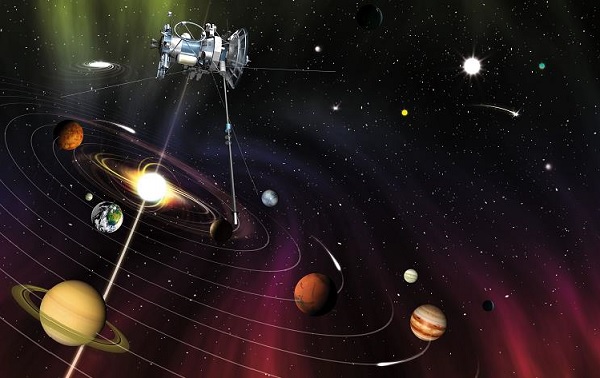
The modern branch of astrophysics namely ‘Theoretical astrophysics,’ describes the functions and behaviors of celestial bodies.
Theoretical astrophysics uses a wide variety of tools such as analytical models (e.g., polytropes to approximate the behaviors of a star) and the computational numerical simulations.
Topics of Astrophysics
Following are the major topics of astrophysics (modern) −
Solar System (formation and evolution);
Stellar dynamics and evolution;
Galaxy formation and evolution;
Magneto-hydrodynamics;
Origin of cosmic rays;
General relativity and physical cosmology.
Major Works in Astrophysics
Following are the major developments in Astrophysics −
By using telescope, Galileo had performed the first astronomical studies in 1609. Galileo discovered sun spots and four satellites of Saturn.
Based on observations of Tycho Brahe, Kepler had developed three laws of planetary motions.
In 1687, Newton had introduced the laws of motion and gravitation.
By giving the theory of relativity in 1916, Einstein provided the first consistent basis to study cosmology.
In 1926, Hubble discovered that the galaxies are recessing and their velocity is increasing with the distance. It means, the universe is expanding and extrapolating this expansion back in time led to the concept of ‘Big Bang.’
In 1974, Hulse and Taylor discovered a binary system of two pulsars that proved the existence of gravitational waves.
Astronomy
Astronomy the oldest branch of is a natural science that studies celestial objects their functional phenomena.
In order to explain the origin of the celestial bodies, their evolution, and phenomena, the different disciplines of science such as physics, chemistry, mathematics are applied.
The objects of study are −
Planets
Satellites or moons
Stars
Galaxies
Comets, etc.
Some of the important phenomena those are studied are −
Supernova explosions
Gamma ray bursts, and
Cosmic microwave background radiation, etc.

During the 20th century, based on approach of study, the astronomy is categorized as −
Observational astronomy − Based on the approach and methods, observational astronomy scientists observe, collect, and analyze the celestial data. To analyze the data, they use basic principles of physics.
Theoretical astronomy − The scientists of theoretical astronomy attempt to develop computer or analytical models in order to describe the celestial bodies and their functionalities.
Likewise, astronomy incorporates the diverse disciplines such as celestial navigation, astrometry, observational astronomy, etc.; this is how astrophysics is profoundly related to astronomy.
Physics - Measurement Units
The following table illustrates the major measuring units in physics −
| Mass And Related Quantities | |||
|---|---|---|---|
| Quantity | Symbol | Unit | |
| Density | ρ | kg.m-3 | |
| Volume | V | m-3 | |
| Force | F | Newton (N) | |
| Torque | M | N.m | |
| Pressure | P | Pascal (Pa) | |
| Dynamic viscosity | η | Pa.s | |
| Acoustic pressure | p | Pascal (pa) | |
| Dynamic volume | v | m3 | |
| Electricity and Magnetism | |||
| Quantity | Symbol | Unit | |
| Power | P | watt (W = J/s) | |
| Energy | W | joule (J = N.m) | |
| Magnetic field strength | H | ampère per metre (A/m) | |
| Electric field | E | volt per metre (V/m) | |
| quantity of electricity | Q | coulomb (C = A.s) | |
| Electrical resistance | R | ohm (Ω = V/A) | |
| electrical capacitance | C | farad (F = C/V) | |
| Potential difference | U | volt (V = W/A) | |
| International System of Units | |||
| meter | m | Length | |
| kilogram | kg | Mass | |
| second | s | Time | |
| ampere | A | Electric Current | |
| kelvin | K | Thermodynamic temperature | |
| mole | mol | Amount of substance | |
| candela | cd | Luminous intensity | |
| radian | rad | Angle | |
| steradian | sr | Solid Angle | |
| hertz | Hz | Frequency | |
| newton | N | Force, weight | |
| pascal | Pa | pressure, stress | |
| joule | J | energy, work, heat | |
| watt | W | Power, radiant, flux | |
| coulomb | C | Electric charge | |
| volt | V | Voltage, electromotive force | |
| farad | F | Electric capacitance | |
| ohm | Ω | Electric resistance | |
| tesla | T | Magnetic flux density | |
| degree Celsius | 0C | Temperature | |
| becquerel | Bq | radioactivity | |
| henry | H | Magnetic induction | |
| Angstrom | Å | Wave length | |
Conversion of Units
| Unit I | Value in another unit |
|---|---|
| 1 Inch | 2.54 centimeter |
| 1 Foot | 0.3048 meter |
| 1 Foot | 30.48 centimeter |
| 1 Yard | 0.9144 meter |
| 1 Mile | 1609.34 meter |
| 1 Chain | 20.1168 meter |
| 1 Nautical mile | 1.852 kilometer |
| 1 Angstrom | 10-10 meter |
| 1 Square inch | 6.4516 square centimeter |
| 1 Acre | 4046.86 square meter |
| 1 grain | 64.8 milligram |
| 1 dram | 1.77 gm |
| 1 ounce | 28.35 gm |
| 1 pound | 453.592 gram |
| 1 horse power | 735.499 Watt |
Physics - Major Instruments and Their Uses
The following table illustrates the major scientific instruments and their uses −
| Instrument | Use |
|---|---|
| Accelerometer | Measures acceleration |
| Altimeter | Measures altitude of an aircraft |
| Ammeter | Measures electric current in ampere |
| Anemometer | Measures wind speed |
| Barometer | Measures atmospheric pressure |
| Bolometer | Measures radiant energy |
| Caliper | Measures distance |
| Calorimeter | Measures heat (in chemical reaction) |
| Crescograph | Measures growth in plant |
| Dynamometer | Measures torque |
| Electrometer | Measures electric charge |
| Ellipsometer | Measures optical refractive indices |
| Fathometer | Measures depth (in sea) |
| Gravimeter | Measures the local gravitational field of the Earth |
| Galvanometer | Measures electric current |
| Hydrometer | Measures specific gravity of liquid |
| Hydrophones | Measures sound wave under water |
| Hygrometer | Measures atmospheric humidity |
| Inclinometer | Measures angel of slope |
| Interferometer | Infrared light spectra |
| Lactometer | Measures purity of milk |
| Magnetograph | Measures magnetic field |
| Manometer | Measures pressure of gas |
| Ohmmeter | Measures electric resistance |
| Odometer | Measures distance travelled by a wheeled vehicle |
| Photometer | Measures intensity of light |
| Pyrometer | Measures temperature of a surface |
| Radiometer | Measures intensity or force radiation |
| Radar | Detects distance object, e.g. aircraft, etc. |
| Sextant | Measures angle between two visible objects |
| Seismometer | Measures motion of the ground (earthquake/seismic waves) |
| Spectrometer | Measures spectra (light spectrum) |
| Theodolite | Measures horizontal and vertical angles |
| Thermopile | Measures small quantities of radiant heat |
| Thermometer | Measures temperature |
| Udometer | Measures amount of rainfall |
| Viscometer | Measures the viscosity of fluid |
| Voltmeter | Measures volt |
| Venturi meter | Measures flow of liquid |
Inventions & Inventors in Physics
The following table illustrates the major inventions and their inventors in physics uses −
| Invention | Inventor |
|---|---|
| Centigrade scale | Anders Celsius |
| Watch | Peter Henlein |
| Radio | Guglielmo Marconi |
| Telephone | Alexander Graham Bell |
| Electricity | Benjamin Franklin |
| Electric Light Bulb | Thomas Edison |
| Thermometer | Galileo Galilei |
| Telescope | Hans Lippershey and Zacharias Janssen; later Galileo |
| Telegraph | Samuel Morse |
| Cosmic Rays | Victor Hess (but the term ‘cosmic rays’ first used by Robert Millikan |
| Automobile | Karl Benz |
| Magnetic Tape | Fritz Pfleumer |
| Transformer | Michael Faraday (later Ottó Titusz Bláthy) |
| Electromagnetic Induction | Michael Faraday |
| Quantum mechanics | Werner Heisenberg, Max Born, and Pascual Jordan |
| Wave mechanics | Erwin Schrödinger |
| Nuclear Reactor | Enrico Fermi |
| Fuel Cell | William Grove |
| Airplane | Wright Brothers |
| Barometer | Evangelista Torricelli |
| Camera | Nicéphore Niépce |
| Diesel Engine | Rudolf Diesel |
| Helicopter | Igor Sikorsky |
| Dynamite | Alfred Nobel |
| Lift | Elisha Otis |
| Laser Printer | Gary Starkweather |
| Mobile Phone | Martin Cooper |
| Printing Press | Johannes Gutenberg |
| Video Games | Ralph Baer |
| Steam engine | Thomas Newcomen |
| Railway Engine | George Stephenson |
| Jet Engine | Frank Whittle |
| Seismograph | John Milne |
| Electric Generator | Michael Faraday |
| Television | John Logie Baird |
| Refrigerator | William Cullen (later Oliver Evans) |
| Carburetor | Luigi De Cristoforis & Enrico Bernardi |
| Air Brake | George Westinghouse |
| Atomic bomb | Robert Oppenheimer, Edward Teller et al |
| Air conditioner | Willis Carrier |
| Machine Gun | Sir Hiram Maxim |
| Radar | Sir Robert Alexander Watson-Watt |
| Submarine | Cornelius Drebbel (later) David Bushnell |
| First military submarine | Yefim Nikonov |
| Transistor | John Bardeen, Walter Brattain, and William Shockley |
| Galvanometer | Johann Schweigger |
| Laser | Theodore H. Maiman (first demonstrated) |
| Neon lamp | Georges Claude |
| Rocket Engine | Robert Goddard |
| Typewriter | Christopher Latham Sholes |
Physics - Timeline
The following table illustrates the major events (along with probably time period) that occurred in physics −
| Event | Time Period |
|---|---|
| Babylonians collected information of planets and stars | 2000 BC to 1600 BC |
| Ancient Indians explained the evolution of universe and also explained about sun, moon, earth, and other planets | 1500 BC to 1000 BC |
| Greek philosopher Anaxagoras explained the physical universe | During 5th Century BC |
| Two Greek philosophers namely Leucippus and Democritus established the school of Atomism | During 5th Century BC |
| Aristotle, the Greek philosopher, described a geocentric universe | During 4th Century BC |
| The Greek philosopher Heraclides explained the motions of planets and stars | During 4th Century BC |
| Eratosthenes, the Greek mathematical geographer proposed the round shape of the Earth | During 3rd Century BC |
| Hipparchus was the first who measured the precession of the equinoxes | During 2nd Century BC |
| Based on Aristotelian ideas, the Roman-Egyptian mathematician and astronomer Ptolemy described a geocentric model | During 2nd Century AD |
| The Indian astronomer and mathematician Aryabhata described the earth’s elliptical orbit around the sun and its axis (heliocentric view) | During 5th Century AD |
| Brahmagupta, the Indian mathematician and astronomer noticed the gravity of earth | During 7th Century AD |
| Abu al-Rayhan al-Biruni, the Persian astronomer described the Earth's gravitation. | During 11th Century AD |
| Nicolaus Copernicus, the Polish astronomer and polymath explained the heliocentric principal scientifically | During 16th Century Ad |
| Johannes Kepler, the German mathematician and astronomer propounded Laws of Planetary Motion | During 17th Century AD |
| Galileo Galilei, the Italian mathematician and physicist invented an astronomical telescope | During 17th Century AD |
| Sir Isaac Newton, the English mathematician, astronomer, and physicist propounded Laws of Motions and Universal Law of Gravitation | During 17th Century AD |
| Emanuel Swedenborg first suggested parts of the nebular hypothesis | 1734 AD |
| Immanuel Kant publishing “Universal Natural History and Theory of the Heavens,” and explained nebular hypothesis | 1755 AD |
| Max Planck, the German physicist described the law of black body radiation and led the foundation of quantum physics | During 20th Century AD |
| Albert Einstein, the German physicist propounded the theory relativity | During the 20th Century AD |
| Max Planck introduced formula for Black Body radiation | 1900 AD |
| Kamerlingh Onnes experimented and noticed superconductivity | 1911 AD |
| Wolfgang Pauli, the Austrian theoretical physicist proposed an important quantum mechanical principle namely the ‘Pauli exclusion principle’ | 1925 AD |
| Georges Lemaître proposed Big Bang theory | 1927 AD |
| Edwin Hubble explained the expanding nature of universe (known as Hubble’s Law) | 1929 AD |
| Otto Hahn discovered nuclear fission discovered | 1938 AD |
| Black Hole Entropy | 1972 AD |
| Richard Feynman proposes quantum computing | 1980 AD |
| Theory of cosmic inflation | 1981 AD |
| Top quark discovered | 1995 AD |
| Gravitational waves detected | 2015 AD |
Physics - Unsolved Problems
Introduction
The meaning of unsolved problems is – the developed theories and models are incapable to explain some ongoing phenomenon or science experiments are not able to rectify the concerned phenomena.
The following table illustrates the major unsolved problems in physics −
| Quantum Physics | |
| Is there a single possible past? | |
| Is the present time physically distinct from the past and future? | |
| How is quantum information stored as a state of a quantum system? | |
| Cosmology | |
| Is there any feasibility to reconcile time with general relativity? | |
| Why is the distant universe so homogeneous when the Big Bang theory appears to predict larger measurable anisotropies of the night sky than the observed one? | |
| Is the universe heading towards a Big Freeze, a Big Crunch, a Big Rip, or a Big Bounce? | |
| What is the size of the whole universe? | |
| What is the identity of dark matter? | |
| What is the probable cause of the observed accelerated expansion of the universe? | |
| Black holes | Is there any way to probe the internal structure of black holes somehow? |
| Extra dimensions | Does nature have any fifth space time dimensions? |
| Particle physics | |
| Is the proton fundamentally stable? | |
| Did particles that carry "magnetic charge" exist in the past? | |
| What is the electric charge radius of the proton? | |
| How does electric charge differ from gluonic charge? | |
| Astrophysics | |
| How does the Sun generate its periodically reversing large-scale magnetic field? | |
| Why & how is the Sun's corona (i.e. atmosphere layer) much hotter than the Sun's surface? | |
| What is responsible for the numerous interstellar absorption lines discovered in astronomical spectra? | |
| What is the origin of the M-sigma relation between the supermassive black hole mass and the galaxy velocity dispersion? | |
| What is the precise mechanism by which an implosion of a dying star becomes an explosion? | |
| What is the source of space roar? | |
| Where did Earth's water come from? | |
| What is the nature of neutron stars and dense nuclear matter? | |
| What is the origin of the elements in the cosmos? | |
| Optical physics | What is the momentum of light in optical media? |
| Biophysics | |
| How do genes govern human body, withstanding different external pressures and internal stochasticity? | |
| What are the quantitative properties of immune responses? | |
| What are the basic building blocks of immune system networks? | |
| Condensed matter physics | |
| Is topological order stable at non-zero temperature? | |
| Is it feasible to develop a theoretical model to describe the statistics of a turbulent flow? | |
| What causes the emission of short bursts of light from imploding bubbles in a liquid when excited by sound? | |
| What is the nature of the glass transition between a fluid or regular solid and a glassy phase? | |
| What is the mechanism that causes certain materials to exhibit superconductivity at temperatures much higher than around 25 kelvin? | |
| Is it possible to make a material that is a superconductor at room temperature? |
Terminologies in Physics
The following table illustrates the major ‘Terms’ in physics −
| Terms | Meaning |
|---|---|
| Absolute Zero | It means the theoretical lowest possible temperature |
| Acoustics | The branch of physics that studies sound |
| Adhesion | The propensity of dissimilar particles or surfaces to adhere or cling to one another |
| Alpha particles | It consists of two protons and two neutrons bound together into a particle (i.e. identical to a helium nucleus) |
| Amorphous solid | It is non-crystalline solid, which has no definite shape |
| Amplitude | It is height of a wave, which is measured from its center position |
| Angstrom (Å) | It is an unit of linear measurement that measures micro-particles |
| Atomic mass unit | It is one-twelfth the mass of an atom of the isotope 12⁄6C |
| Beta Particles | It is high-energy, high-speed electrons or positrons emitted by the particular types of radioactive nuclei |
| Big Bang | The cosmological model that explains the early development of the Universe |
| Binding energy | The mechanical energy that is required to disassemble a whole into separate parts |
| Black hole | A region of space-time, which gravity is very powerful and prevents anything, including light, from escaping |
| Boson | It is one of two classes of elementary particles; second one is fermions |
| Cathode | An electrode through which electric current flows out of a polarized electrical device |
| Centrifugal force | Center fleeing |
| Centripetal force | Center seeking |
| Condensed matter physics | A branch of physics that studies the physical properties of condensed phases of matter |
| Convection | The process of transfer of heat by the actual transfer of matter |
| Crest | The point on a wave with the maximum value |
| Doppler effect | The change in frequency of a wave for an observer moving relative to its source |
| Ductility | It is the property of solid material that deform under tensile stress |
| Elasticity | It is physical property of materials which return to their original shape once they are deformed. |
| Electromagnet | A typical magnet in which the magnetic field is produced by passing the electric current |
| Entropy | A quantity that describes the randomness of a substance or a system |
| Escape velocity | The speed at which the kinetic energy and the gravitational potential energy of an object is zero. Likewise, the escape velocity is the speed required to "break free" from a gravitational field without further propulsion |
| Free fall | Any motion of a body where its weight is the only force acting upon it |
| Ice point | A transitional phase of a substance from a liquid to a solid. |
| Inertia | It is the tendency of an object to resist any change in its motion |
| Kinematics | Geometry of motion |
| Neutrino | An electrically neutral subatomic particle |
| Photon | It is an elementary particle |
| Quark | It is an elementary particle and a fundamental constituent of matter |
| Redshift | Shifting towards the red end of the spectrum |
| Screw | It is a mechanism that converts rotational motion to linear motion |
| Siphon | An inverted U tube that causes a liquid to flow uphill without support of any pump. It is basically powered by the fall of the liquid as it flows down the tube under the force of gravity |
| Sublimation | It is a process of transformation in which solid directly changed to gas without passing through an intermediate liquid phase |
| Supernova | A stellar explosion, which is more energetic than a nova |
| Vector | Vector is a quantity, which has both magnitude and direction |
| White dwarf | It is a stellar remnant, which is composed largely of electron-degenerate matter. These are very dense |
| Wind shear | It is the difference between wind speed and direction over a relatively short distance in the atmosphere |
Major Theories and Laws in Physics
The following table illustrates the major theories in Physics along with their respective fields −
| Theory | Filed |
|---|---|
| Standard Model | Nuclear Particle Physics |
| Quantum field theory | |
| Quantum electrodynamics | |
| Quantum chromodynamics | |
| Electroweak theory | |
| Effective field theory | |
| Lattice field theory | |
| Lattice gauge theory | |
| Gauge theory | |
| Supersymmetry | |
| Grand unification theory | |
| Superstring theory | |
| M-theory | |
| Quantum optics | Optical physics |
| Quantum chemistry | Atomic and molecular physics |
| Quantum information science | |
| BCS theory | Condensed matter physics |
| Bloch wave | |
| Density functional theory | |
| Fermi gas | |
| Fermi liquid | |
| Many-body theory | |
| Statistical Mechanics | |
| Big Bang | Astrophysics |
| Cosmic inflation | |
| General relativity | |
| Newton's law of universal gravitation | |
| Lambda-CDM model | |
| Magneto-hydrodynamics | |
| Newton's Law of universal gravitation | Mechanics |
| Newton's Laws of motion | |
| Ampère's circuital law | Current Electricity |
| Birch's law | Geophysics |
| Bell's theorem | Quantum mechanics |
| Beer–Lambert law | Optics |
| Avogadro's law | Thermodynamics |
| Boltzmann equation | |
| Boyle's law | |
| Coulomb's law | Electrostatics and Electrodynamics |
| Doppler effect | Sound |
| Theory of relativity (Einstein) | Modern Physics |
| Faraday's law of induction | Electromagnetism |
| Gauss's law | Mathematical Physics |
| Pascal's law | Fluid statics and dynamics |
| Planck's law | Electromagnetism |
| Raman scattering | Optics |
| Vlasov equation | Plasma physics |
Nobel Prize In Physics
Introduction
The Nobel Prize in Physics is the most prestigious award given yearly by the Royal Swedish Academy of Sciences.
The Noble prize is given to those physicists who conferred the most outstanding contributions for mankind (in physics).
Wilhelm Röntgen, a German/Dutch physicist, was the first person who had received the first Nobel Prize in 1901.
Wilhelm Röntgen had received the Nobel Prize for discovery of the remarkable x-rays).
In the field of physics (by the time), only two women have won the Nobel Prize, namely Marie Curie (in 1903) and Maria Goeppert Mayer (in 1963).
The following table illustrates some of the significant physicists who have received the Nobel Prize along with their remarkable works −
| Name | Year: Country | Work |
|---|---|---|
| Wilhelm Conrad Röntgen | 1901: Germany | Discovery of the remarkable rays |
| Hendrik Lorentz | 1902: Netherlands | Worked on the influence of magnetism upon radiation phenomena |
| Pieter Zeeman | ||
| Antoine Henri Becquerel | 1903: France | Spontaneous radioactivity |
| Pierre Curie | Radiation phenomena | |
| Maria Skłodowska-Curie | 1903: Poland/France | |
| Philipp Eduard Anton von Lenard | 1905: Austria-Hungary | Worked on cathode rays |
| Guglielmo Marconi | 1909: Italy | Development of wireless telegraphy |
| Karl Ferdinand Braun | 1909: Germany | |
| Max Planck | 1918: Germany | Discovered energy quanta |
| Johannes Stark | 1919: Germany | Discovered Doppler effect in canal rays |
| Albert Einstein | 1921: Germany-Switzerland | For the discovery of the law of the photoelectric effect |
| Niels Bohr | 1922: Denmark | Investigated the structure of atoms |
| Chandrasekhara Venkata Raman | 1930: India | Worked on scattering of light |
| Werner Heisenberg | 1932: Germany | Created quantum mechanics |
| Erwin Schrödinger | 1933: Austria | Discovered productive forms of atomic theory |
| Paul Dirac | 1933: United Kingdom | |
| James Chadwick | 1935: UK | Discovered Neutron |
| Victor Francis Hess | 1936: Austria | Discovered cosmic radiation |
| Willis Eugene Lamb | 1955: US | Discovered the fine structure of the hydrogen spectrum |
| Emilio Gino Segrè | 1959: Italy | Discovered the antiproton |
| Owen Chamberlain | 1959: US | |
| Lev Davidovich Landau | 1962: Soviet Union | Theories for condensed matter |
| Maria Goeppert-Mayer | 1963: US | Discovered nuclear shell structure |
| J. Hans D. Jensen | 1963: Germany | |
| Hans Albrecht Bethe | 1967: US | Worked on the theory of nuclear reactions |
| Murray Gell-Mann | 1969: US | Classification of elementary particles and their interaction |
| Hannes Olof Gösta Alfvén | 1970: Sweden | Worked on plasma physics |
| Louis Néel | 1970: France | Worked solid state physics (antiferromagnetism and ferrimagnetism) |
| Dennis Gabor | 1971: Hungary-UK | Developed the holographic method |
| John Bardeen | 1972: US | Developed the theory of superconductivity |
| Leon Neil Cooper | ||
| John Robert Schrieffer | ||
| Arno Allan Penzias | 1978: US | Discovered cosmic microwave background radiation |
| Robert Woodrow Wilson | ||
| Nicolaas Bloembergen | 1981: Netherlands-US | Developed laser spectroscopy |
| Arthur Leonard Schawlow | 1981: US | |
| Ernst Ruska | 1986: Germany | Designed the first electron microscope |
| Johannes Georg Bednorz | 1987: Germany | Discovered the superconductivity in ceramic materials |
| Karl Alexander Müller | 1987: Switzerland | |
| Robert B. Laughlin | 1998: US | Discovered a new form of quantum fluid |
| Horst Ludwig Störmer | 1998: Germany | |
| Daniel Chee Tsui | 1998: China-US | |
| Jack St. Clair Kilby | 2000: US | Developed integrated circuit |
| Riccardo Giacconi | 2002: Italy-US | Discovered cosmic X-ray sources |
| Roy J. Glauber | 2005: US | Worked on the quantum theory of optical coherence |
| Willard S. Boyle | 2009: Canada-US | Invented an imaging semiconductor circuit – the CCD sensor |
| George E. Smith | 2009: US | |
| Takaaki Kajita | 2015: Japan | Discovered neutrino oscillations, which illustrations that the neutrinos have mass |
| Arthur B. McDonald | 2015: Canada |
Awards Given in Physics
Following are the exclusive category of awards given in the field of Physics −
| David Adler Lectureship Award in the Field of Materials Physics |
| Alexander Hollaender Award in Biophysics |
| Hannes Alfvén Prize |
| Andrew Gemant Award |
| Appleton Medal and Prize |
| ASA Gold Medal |
| ASA Silver Medal |
| Hans Bethe Prize |
| Blaise Pascal Chair |
| Bogolyubov Prize |
| Bogolyubov Prize (NASU) |
| Bogolyubov Prize for young scientists |
| Boltzmann Medal |
| Ludwig Boltzmann Prize |
| Tom W. Bonner Prize in Nuclear Physics |
| Max Born Prize |
| Breakthrough Prize in Fundamental Physics |
| Oliver E. Buckley Condensed Matter Prize |
| CAP-CRM Prize in Theoretical and Mathematical Physics |
| Charles Hard Townes Award |
| Comstock Prize in Physics |
| Elliott Cresson Medal |
| Davisson–Germer Prize in Atomic or Surface Physics |
| Demidov Prize |
| Duddell Medal and Prize |
| Eddington Medal |
| Edison Volta Prize |
| Einstein Prize for Laser Science |
| Albert Einstein Award |
| Albert Einstein Medal |
| Einstein Prize (APS) |
| Albert Einstein World Award of Science |
| EPS Europhysics Prize |
| Faraday Medal and Prize |
| Nobel Prize in Physics |
| Fluid Dynamics Prize (APS) |
| Foresight Institute Feynman Prize in Nanotechnology |
| List of Fritz London Memorial Prizes |
| Hector Memorial Medal |
| Dannie Heineman Prize for Astrophysics |
| Dannie Heineman Prize for Mathematical Physics |
| Henri Poincaré Prize |
| Hoyle Medal and Prize |
| Infosys Prize |
| Isaac Newton Medal |
| Frank Isakson Prize for Optical Effects in Solids |
| James Clerk Maxwell Prize in Plasma Physics |
| James C. McGroddy Prize for New Materials |
| Niels Bohr Institute |
| Om Prakash Bhasin Award |
| Otto Hahn Prize |
| Abraham Pais Prize for History of Physics |
| George E. Pake Prize |
| Max Planck Medal |
| Earle K. Plyler Prize for Molecular Spectroscopy |
| Pomeranchuk Prize |
| Prize Ampère |
| Aneesur Rahman Prize for Computational Physics |
| Rayleigh Medal |
| Rayleigh Medal and Prize |
| David Richardson Medal |
| Richtmyer Memorial Award |
| Robert A. Millikan award |
| Rumford Prize |
| Rutherford Medal and Prize |
| Sakurai Prize |
| Abdus Salam Award |
| Arthur L. Schawlow Prize in Laser Science |
| Walter Schottky Prize |
| Simon Memorial Prize |
| Sloan Fellowship |
| R W B Stephens Medal |
| Swan Medal and Prize |
| Thomson Medal and Prize |
| Three Physicists Prize |
| VASVIK Industrial Research Award |
| Wolf Prize in Physics |
Scientific Units Named After Inventors
The following table illustrates the list of scientific units, which are exclusively named after their inventors/discovers −
| Scientist/Inventor | Unit | Measures |
|---|---|---|
| André-Marie Ampère | ampere (A) | Electric current |
| Lord Kelvin | kelvin (K) | Thermodynamic temperature |
| Antoine Henri Becquerel | becquerel (Bq) | Radioactivity |
| Anders Celsius | degree Celsius (°C) | Temperature |
| Charles-Augustin de Coulomb | coulomb (C) | Electric charge |
| Alexander Graham Bell | decibel (dB) | Ratio |
| Michael Faraday | farad (F) | Capacitance |
| Joseph Henry | henry (H) | Inductance |
| Heinrich Rudolf Hertz | hertz (Hz) | Frequency |
| James Prescott Joule | joule (J) | Energy, work, heat |
| Sir Isaac Newton | newton (N) | Force |
| Georg Simon Ohm | ohm (Ω) | Electrical resistance |
| Blaise Pascal | pascal (Pa) | Pressure |
| Werner von Siemens | siemens (S) | Electrical conductance |
| Nikola Tesla | tesla (T) | Magnetic flux density |
| Alessandro Volta | volt (V) | Electric potential & electromotive force |
| James Watt | watt (W) | Power & radiant flux |
| Wilhelm Eduard Weber | weber (Wb) | magnetic flux |
| Jean-Baptiste Biot | biot (Bi) | Electric current |
| Peter Debye | debye (D) | Electric dipole moment |
| Loránd Eötvös | eotvos (E) | Gravitational gradient |
| Galileo Galilei | galileo (Gal) | Acceleration |
| Carl Friedrich Gauss | gauss (G or Gs) | Magnetic flux density |
| William Gilbert | gilbert (Gb) | Magnetomotive force |
| James Clerk Maxwell | maxwell (Mx) | Magnetic flux |
| Hans Christian Ørsted | oersted (Oe) | Magnetic field strength |
| Jean Léonard Marie Poiseuille | poise (P) | Dynamic viscosity |
| George Gabriel Stokes | stokes (S or St) | Kinematic viscosity |
| Anders Jonas Ångström | ångström (Å) | Distance |
| Heinrich Barkhausen | Bark scale | Psychoacoustical scale |
| Thomas Hunt Morgan | centimorgan (cM) | Recombination frequency |
| Marie Curie and Pierre Curie | curie (Ci) | Radioactivity |
| John Dalton | dalton (Da) | Atomic mass |
| Henry Darcy | darcy (D) | Permeability |
| Gordon Dobson | Dobson unit (DU) | Atmospheric ozone |
| Daniel Gabriel Fahrenheit | degree Fahrenheit (°F) | Temperature |
| Enrico Fermi | fermi (fm) | Distance |
| Godfrey Newbold Hounsfield | Hounsfield scale | Radio density |
| Karl Jansky | jansky (Jy) | Electromagnetic flux |
| Samuel Pierpont Langley | langley (ly) | Solar radiation |
| Irving Langmuir | langmuir (L) | Gas exposure dose |
| Wilhelm Röntgen | röntgen (R) | X-rays or gamma radiation |
| Charles Francis Richter | Richter magnitude | Earthquake |
| Theodor Svedberg | svedberg (S or Sv) | Sedimentation rate |
| Evangelista Torricelli | torr (Torr) | Pressure |
Physics - Top Institutes
Following are the worldly recognized top institutions in the field of Physics −
| Institute | Country |
|---|---|
| Massachusetts Institute of Technology (MIT) | USA |
| Harvard University | USA |
| University of Cambridge | UK |
| Stanford University | USA |
| Yale University | USA |
| University of California, Berkeley (UCB) | USA |
| University of Oxford | UK |
| Columbia University | USA |
| Princeton University | USA |
| California Institute of Technology (Caltech) | USA |
| University of Chicago | USA |
| University of Michigan | USA |
| ETH Zurich - Swiss Federal Institute of Technology | Switzerland |
| Ludwig-Maximilians-Universität München | Germany |
| Technical University of Munich | Germany |
| University of Toronto | Canada |
| New York University (NYU) | USA |
| Imperial College London | UK |
| University of Pennsylvania | USA |
| Boston University | USA |
| The University of Edinburgh | UK |
| The University of Tokyo | Japan |
| Cornell University | USA |
| University of Maryland, College Park | USA |
| Sapienza University of Rome | Italy |
| University of Texas at Austin | USA |
| National University of Singapore (NUS) | Singapore |
| RWTH Aachen University | Germany |
| Seoul National University | South Korea |
| University College London | UK |
| Georgia Institute of Technology | USA |
| Peking University | China |
| Osaka University | Japan |
| Pennsylvania State University | USA |
| The University of Melbourne | Australia |
| University of California, San Diego (UCSD) | USA |
| University of British Columbia | Canada |
| McGill University | Canada |
| National Taiwan University (NTU) | Taiwan |
| The Australian National University | Australia |
| Brown University | USA |
| Duke University | USA |
| Delft University of Technology | Netherlands |
| Durham University | UK |
| Humboldt-Universität zu Berlin | Germany |
| Johns Hopkins University | USA |
| Lund University | Sweden |
| Nagoya University | Japan |
| Northwestern University | USA |
| The Ohio State University | USA |
| Purdue University | USA |
| Rice University | USA |
| Rutgers University - New Brunswick | USA |
| Stockholm University | Sweden |
| Technische Universität Dresden | Germany |
| University of Bristol | UK |
| University of Washington | USA |
Post a Comment